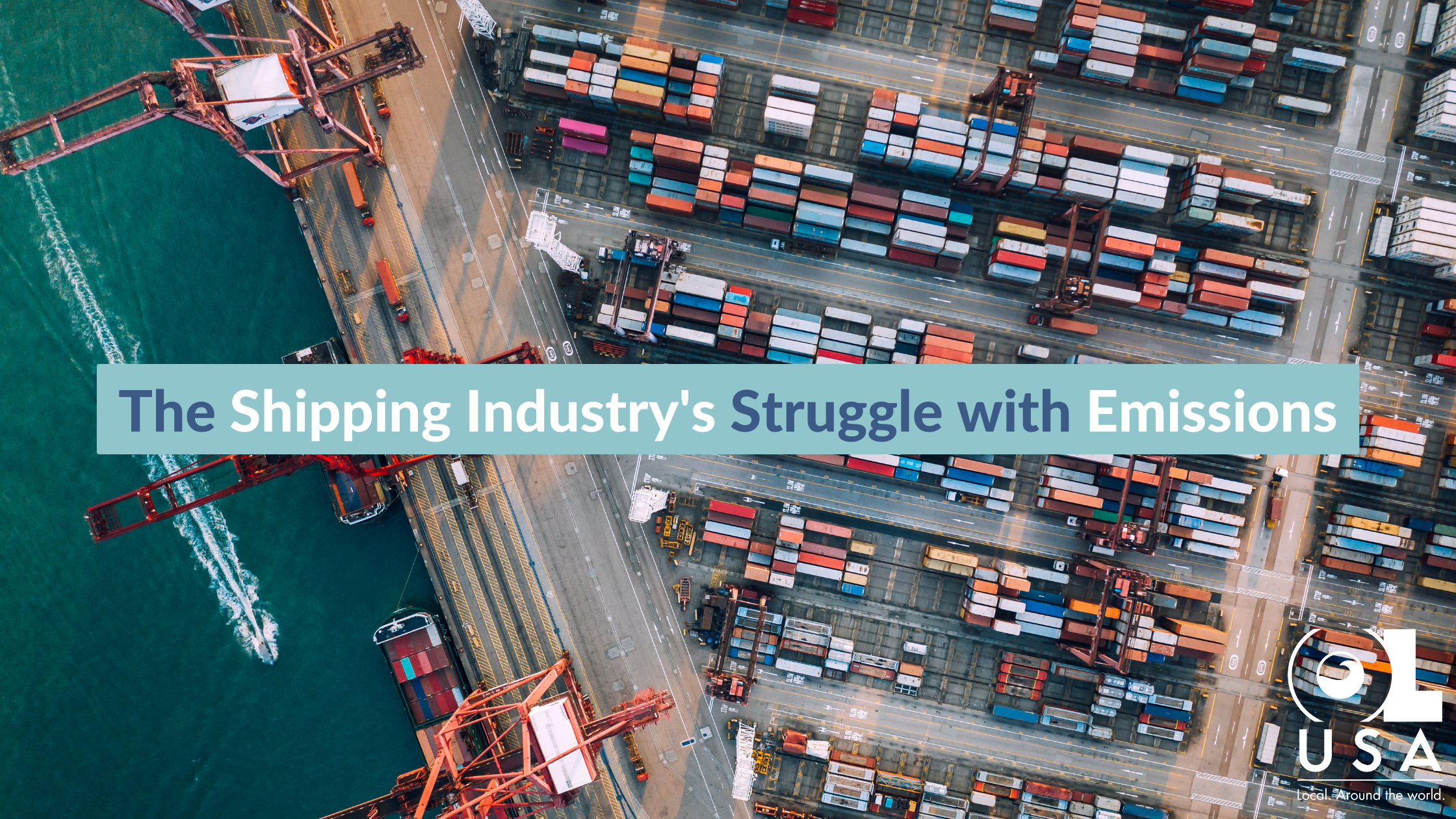Consider the typical transport charter. A shipowner is tasked with moving cargo from point A to point B as quickly as possible, regardless of port traffic. Efficiency is so prized that, in many cases, customers will even pay additional for demurrage—waiting at anchorage.
Granted, there’s a downside. Ship owners are burning more fuel, rushing across the ocean, and waiting at their destination port. Those ships could wait two to three weeks or more between the anchor and holding zones at peak. While waiting, they’re earning those demurrage bonuses—and, simultaneously, burning even more fuel.
It’s a “hurry up and wait” approach, adding to the shipping industry’s emission problems.
The State of Shipping and Carbon Emissions
The shipping industry is responsible for about 3% of carbon emissions—on par with major carbon-emitting countries. Only the U.S., China, Russia, India, and Japan emit more CO2 than the global shipping industry.
Despite this massive environmental impact, carbon emissions from vessels are widely unregulated—and as a result, the shipping industry is on track to contribute 10% of global greenhouse gas emissions by 2050, with black carbon accounting for 21% of CO2-equivalent emissions from ships. But, not surprisingly, with limited regulations, post-COVID rebounds, and added profit incentives for speedy delivery, striking a balance that satisfies supply chain leaders and sustainability advocates has been challenging.
The IMO’s Push for Cleaner Cargo Transport
Now though, shipping industry leaders are being pushed to reimagine their charters. In January, the International Maritime Organization (IMO) began enforcing its Carbon Intensity Indicator (CII). The CII provides vessels with an annual reduction factor, ensuring continuous operational carbon intensity improvement. Annual operational CII must be documented and verified against these benchmarks.
Beyond CII, though, international cargo and container shipping has yet to do much to promote decarbonization. A common argument? It’s difficult, if not impossible, to find an efficient, effective, and readily available means of powering massive ships beyond fuel.
Through CII and other IMO-driven regulations, the organization is focused on a 50% reduction in industry emissions before 2050. But on the flip side, industry insiders anticipate increased trade to drive maritime volumes up significantly, fueling the “10%-by-2050” projections.
Decarbonizing The Shipping Industry
Beyond the IMO, port-level strategies that have already shown tremendous promise in helping reduce carbon emissions are being implemented. While not a perfect solution, “just-in-time” (JIT) arrivals—timed properly—could help reduce the industry’s carbon footprint. Using a JIT model, ports coordinate available resources, and incoming vessels manage their course, so they arrive in time for an open berth. While this limits wait times at the port, ships often wind up slowing down their journeys to ensure on-time arrival.
Likewise, “virtual arrivals” can help reduce emissions. Similar to JIT, with a virtual vessel arrival system, ships are notified of anticipated delays and align arrival times to berth availability. When a delay is expected, operators optimize their speed and routing against weather and ocean conditions, aiming to arrive when a berth is open. This, like JIT, reduces or eliminates wait times.
Though tricky to implement at scale, using a JIT and virtual arrival containerships can reduce fuel consumption and CO2 emissions by 14.16% per voyage. Even optimizing its speed over the final 12 or 24 hours could cut emissions by 4.23% ad 5.9%, respectively.
The challenge is implementing JIT and virtual arrivals with meaningful scale. When it comes to virtual arrivals, multiple parties are involved with each vessel’s arrival, and ships must agree to slow down as they approach the port in most cases. Again, with financial incentives often tied to early arrivals—and lengthy waits—promoting this approach may not land with vessel operators.
At the same time, there are a host of benefits to virtual arrivals. In addition to reduced fuel consumption in transit and anchorage, because there are fewer vessels in the port, there are also fewer collisions—and less budget spent on repairs and legal fees. There are also reduced demurrage fees thanks to shorter anchorage time and better dockside efficiency. Vessel operators may also save by reducing total voyage time by choosing later departure dates to avoid delays at their final port.
JIT arrivals have similar challenges. Ports utilizing a JIT approach must coordinate customs, tugs, pilots, stevedores, and more. Because each group works independently, JIT has had limited implementation globally.
Those ports that do implement JIT, though, are seeing significant improvements in carbon emissions. In several pilots surrounding both container and bulk terminals, idle time was reduced significantly. One pilot saw a 20% reduction in idle time on Shell vessel departures. Another reduced Maersk vessel idle time by 36%. Operational efficiency and asset utilization then skyrocket port-side while carbon emissions decline.
Future-Focused Measures to Solve Shipping’s Emissions Problem
In addition to IMO regulations and shifts in port efficiencies, several strategies can help curb emissions while ensuring vessels meet delivery mandates. Speed reductions and ship and engine designs that slow steaming could also contribute to decarbonization efforts. Reducing speed by just 10% across the global fleet would have a 23.3% impact on carbon emissions (based on 2010 numbers). Slowing some ships by just five knots—20%—could drive 50% cost savings on fuel while reducing carbon emissions, nitrogen oxides, black carbon, and nitrous oxide released into the environment.
Similarly, weather routing, fuel switching, and specialized hull coatings could help curb emissions.
The shipping industry is at a clear crossroad. Left unchecked, industry emissions are expected to grow to 130% of their 2008 levels over the next 25 years. While cost and speed to port will always be a concern, many organizations are leading the decarbonization charge. Maersk, for example, has set internal goals, aiming for net zero by 2040 and reducing emissions by half per container in the next seven years.
Ideally, other industry leaders and ports will follow suit, with an eye on tightening internal guidelines and adhering to IMO and local mandates. With this added commitment, shipping and supply chain companies can both contribute to long-term environmental well-being while, at the same time, finding and activating new strategies to boost speed, efficiency, and customer satisfaction.



